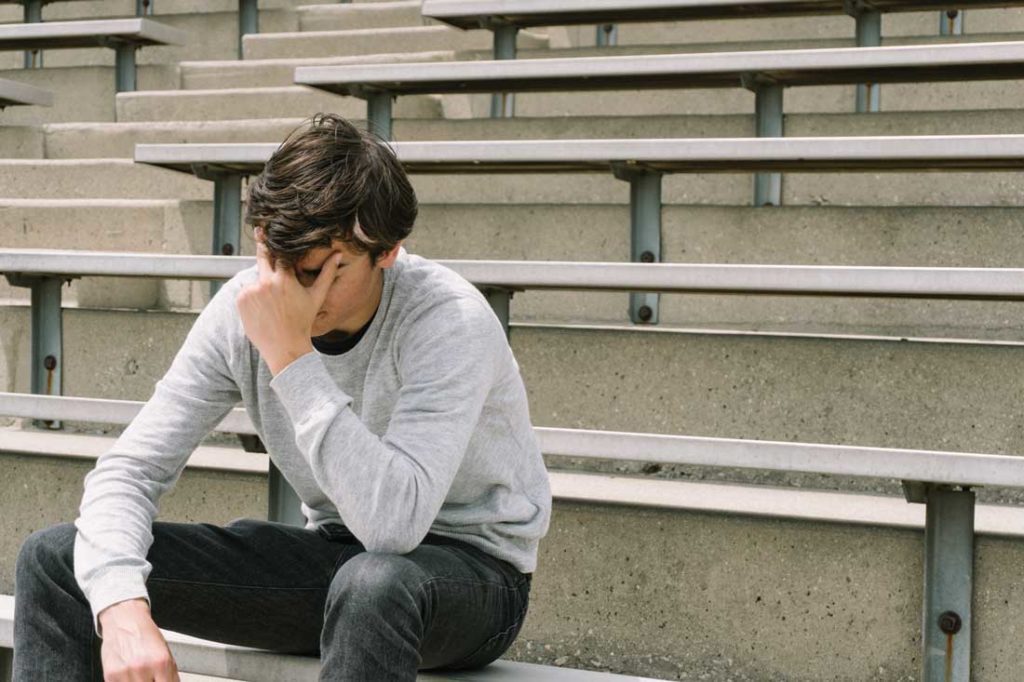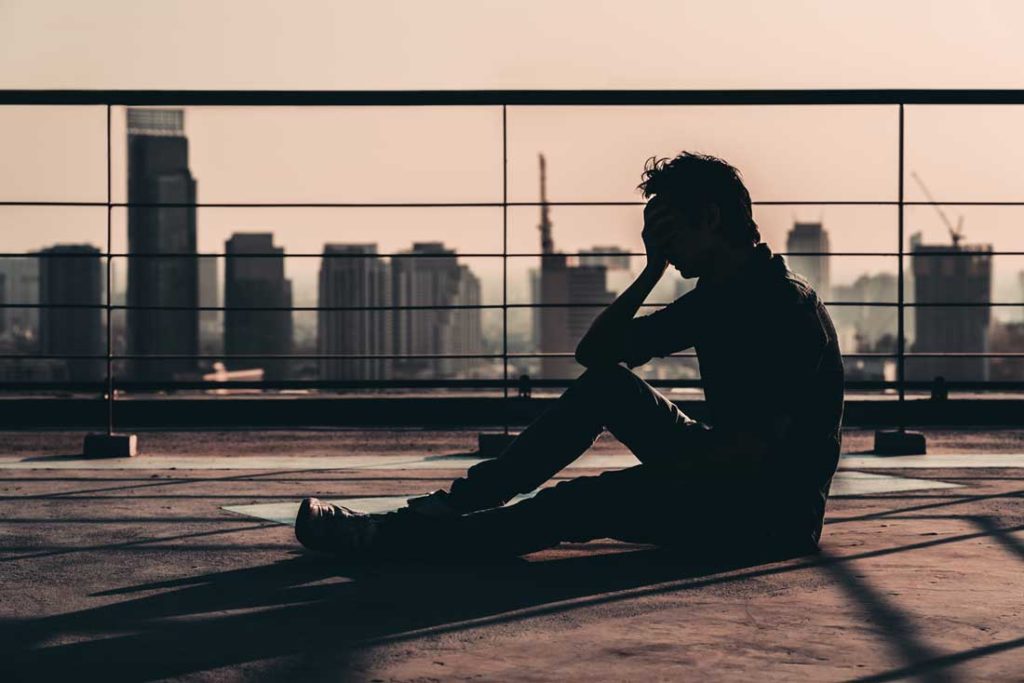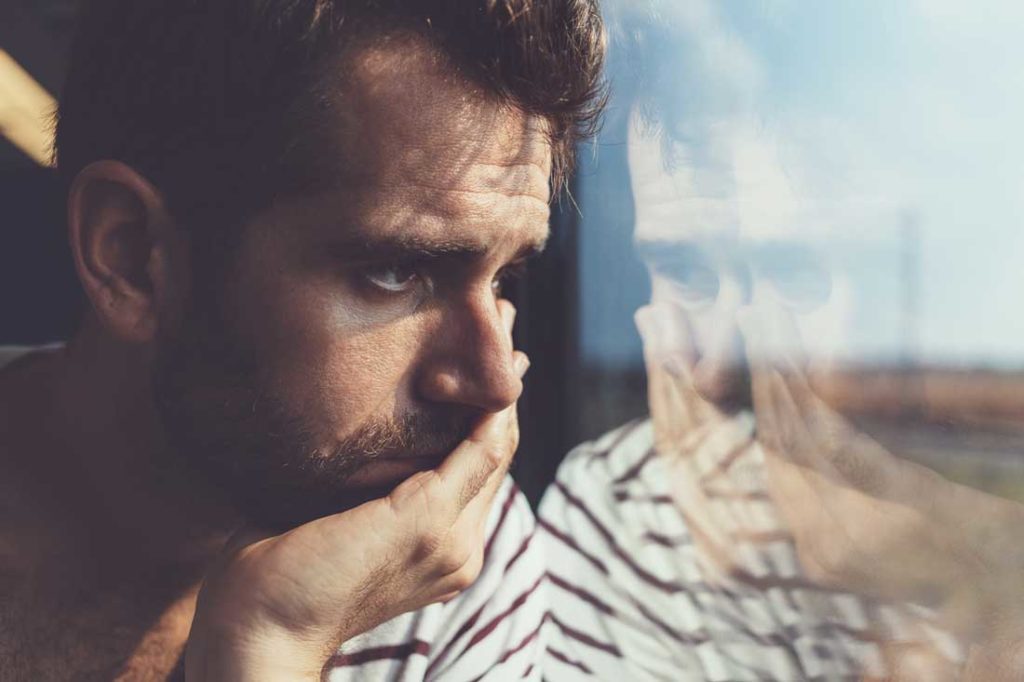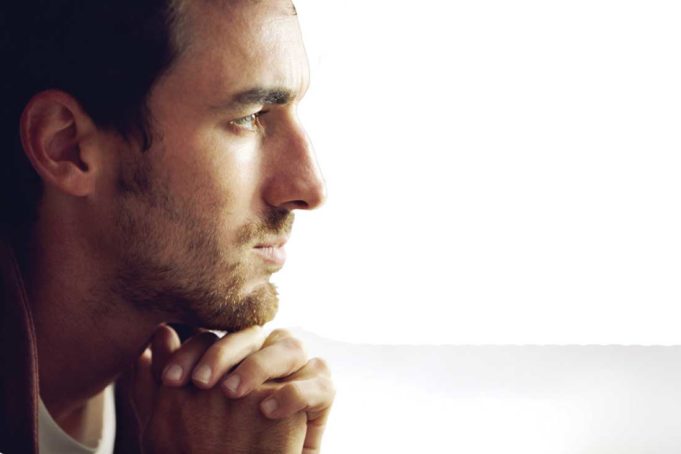I thought about it, yes. I even went so far as to twist together a crude noose out of some rope from the cellar and affix it to my balcony. I guess you could say I was “depressed” or “distraught.” I knew what I was feeling was very real. Those tears pouring down my face could be measured by the casket-ful. “Where was my fortune?” “Where was my fame?” “Where was my soul mate?” “Why did my father have to die so young, when all of the other dago men I know are walking around as healthy as horses?”
I also knew that I was not a third-world refugee on some distant shore. That’s one thing that kept me going. There was also my vanity, my oversized sense of entitlement (that has turned out to torpedo me occasionally now that I’m older and married with a kid), and my dream life. I am not kidding. It seems intractably corny now, but the highlight of just about every grueling day was being able to turn out the light and crawl into the quilt on the floor that served as my bed –– in her ongoing effort to sell the house, my mom, the only other person left in our formerly joyous dwelling of seven, junked most of our furniture, including our twin mattresses and box springs. Bundled up and squeezing a pillow tight, I hoped that something cool would happen to my dream self once I drifted off to sleep or that someone nice would come visit me. Christy Turlington sat next to me on my front porch once. I was back in college playing football in another dream. I’m too tired from what I’d put myself through to even pretend to be embarrassed by any of this anymore. It is what it is.
I can’t even imagine being a twentysomething today. Our 20s can be rough and not just because we don’t have enough experience to obtain full-time or at least decent-paying work. Every word, thought, and action is laced with hormonal drama. The reason car companies don’t rent to anyone under 25 is that his/her amygdala (or fear-processing circuit) develops before his/her prefrontal cortex (or reasoning circuit), meaning that most under-25-year-olds have underdeveloped reasoning skills while always being apt to freak the eff out. Insurance companies figured out long ago what most of us are just now realizing: Our 20s are insane.
Another reason I wouldn’t want to be a twentysomething today is that life has never been more competitive, its charged, prickly essence fueled by the growing gap between rich and poor, between famous and dreadfully anonymous, between liked and disliked. Rather, “unliked.” (See: tyranny of the upraised thumbs.) And we all know who to thank for that: the same rich old white guys who have been selling us on unattainable ideas and high expectations going back to The Iliad. No wonder most of us feel trapped in a perpetual state of failure. Every other life –– on TV and in Instasnapfacechat –– is just so much rosier. And thinner. And better-looking.
 I know that no matter how content I feel –– I’ve got most of the significant little boxes all checked –– I am always just one bad decision away from being shunted off to that dark place where I’m constantly sad, phantomly victimized, and ashamed. In Texas, this could prove to be fatal.
I know that no matter how content I feel –– I’ve got most of the significant little boxes all checked –– I am always just one bad decision away from being shunted off to that dark place where I’m constantly sad, phantomly victimized, and ashamed. In Texas, this could prove to be fatal.
Suicide is on the rise nationally and regionally, and leading the way are older white males, like me, especially in non-urban areas. Suicide rates in rural counties nationally rose 20 percent between 2004 and 2013, according to the Centers for Disease Control and Prevention, and most rural Texans, as state demographer Lloyd Potter told The Texas Tribune, are more likely to be “older white males, a group with higher rates of death by suicide.”
In the United States, the annual age-adjusted suicide rate is 13.26 per 100,000 individuals, according to the American Foundation for Suicide Prevention. Men are three-and-a-half times more likely to die by suicide than women, and there averages out to be 121 suicides per day. In 2015, white males accounted for seven of every 10 suicides in the country. “The rate of suicide is highest in middle age — white men in particular,” the foundation writes.
From 1999 to 2014, the greatest increase in suicide rates among men have been whites 45 to 64 years old, according to the American Association of Suicidology, a research and awareness nonprofit.
White middle-aged males are also highly susceptible to suicide locally. Through an open records request, the Tarrant County Medical Examiner’s office, which also covers Denton, Johnson, and Parker counties, provided some harrowing data. Between 2002 and 2015, a period of time that reflects national ranges for similar information, 2,518 people successfully committed suicide — 1,195, or nearly half, were white males 35 or older. In total, 1,697 local white males took their own lives between 2002 and 2015.
Being born white and male is like hitting the biological lottery. Is there a demographic more #blessed? Not only are we part of the largest ethnic majority in the Western hemisphere, but we also belong to the (allegedly) dominant gender. Smooth sailing, right?
The problem, evidently, is cultural.
Older white men, according to Silvia Sara Canetto, a psychology professor at Colorado State University, “may be less psychologically equipped [than any other group] to deal with the normal challenges of aging, likely because of their privilege up until late adulthood.”
What I think she’s saying that older white men start losing their mojo once their bodies go from conventionally masculine to frail.
This graying of masculinity, white masculinity, may also explain the rise of Donald Trump. More than any other demographic, white males 40 and up propelled him to the highest office in the land, according to Edison Research for the National Election Pool. The connection is obvious. One of Trump’s promises was, essentially, to turn back the clock to a time when older white males ruled the world with impunity and without fear of reprisal. Trump embodies them. He represents their last gasp at relevancy in a world that’s becoming younger, browner, and gayer.
 Let’s talk about assholes. Being depressed, you have to deal with a lot of them, indirectly, as most of them are in positions of elected/appointed power and are all evidently hell-bent on making your life even harder. One of the biggest assholes in not only Texas but the entire country is Sid Miller. Our agricultural commissioner still hasn’t realized that being born male, white, and able-bodied is a privilege that he neither earned nor, apparently, deserves.
Let’s talk about assholes. Being depressed, you have to deal with a lot of them, indirectly, as most of them are in positions of elected/appointed power and are all evidently hell-bent on making your life even harder. One of the biggest assholes in not only Texas but the entire country is Sid Miller. Our agricultural commissioner still hasn’t realized that being born male, white, and able-bodied is a privilege that he neither earned nor, apparently, deserves.
Here’s what Miller posted –– and promptly deleted –– on his social media feed last month.
“My friend was so depressed last night thinking about the economy, wars, jobs, his savings, Social Security, retirement funds, etc., he decided to call the Suicide Lifeline. He got a call center in Pakistan, and when he told them he was suicidal, they got all excited and asked if he could drive a truck.”
More than 600,000 people follow this heartless “leader” on Facebook. That’s more than 600,000 souls without a clue who are allowed to vote legally. More than 600,000 Trumpers who even though their president –– not mine –– is about to be indicted for treason or convicted of sexual assault still hew to their hardcore ideology: disparage minorities and celebrate being born on third base. More than 600,000 people who actively hate as a way of life.
Back in my suicidal 20s, I eventually realized the only way I was going to get the help I needed was by committing a crime. (Of course I didn’t. I was depressed, not stupid.) Everyone who acknowledged me in my condition — doctors, interns, nurses, nurse practitioners, desk clerks — merely told me not to worry, that I was fine, that I was healthy, even though during one dark period I sprinted from my house to the nearest emergency room at least once a week, claiming I was dying of obviously imaginary cancerous lumps in my neck and can we just cut them out, please? I don’t know how I got by, but I did. (Thanks, Christy.)
Being in my 20s decades before social media, I heard lots of “jokes” about depression and/or suicide. And while I remember only one or two of them, they all hurt. And if they didn’t outright hurt, they made me uncomfortable but not in the way that would have encouraged me to seek help. Apparently, all they made me do was bury my feelings deeper. I didn’t want to be a joke. That was the last thing I wanted.
I didn’t speak to a professional until I finally landed a full-time job with health insurance and had some personal support, my future wife. This was about 10 years later. Ten long years later.
Lots of Texans don’t get help because there’s no one there to help them. Approximately 3.2 million Texans don’t have access to psychiatric aid, based on research by Merritt Hawkins, a Texas-based healthcare consulting firm, making the state the sixth worst in the country for psychiatric and behavioral services. One-hundred-and-eighty-five counties of Texas’ 254 lack a psychiatrist. Getting to see one is only half the problem. How are you going to pay her? Especially if you’re unemployed?
I have to admit, the numbers are a little off-putting. I’ve read them. I’ve digested them. Am I predetermined, based on my age and whiteness, to default to self-harm if times get rough? When times get rough?
More whites have been committing suicide since 2000, based on research by the National Center for Health Statistics. Though rates have been rising for both sexes, and more quickly for women, men are much more likely to die by suicide than women.
Of all 50 states, old/older white males are most at risk of suicide in Montana.
“Probably the biggest reason is socio-economic,” said that state’s suicide prevention coordinator. “We have about 150,000 people in our state that don’t have access to any type of healthcare, which is a major issue. We have a lot of people living in poverty. Wages are not going up at the same pace as rising health costs, rising cost of living, and inflation. … Definitely you see a lot of people that all of a sudden they hit 45 or 50, and they don’t see retirement as a bonus. They see something that they’re going to have to struggle with, and they’re not going to be able to retire.”
Butte’s health director says it’s all related to “the expectation that as a middle-aged white person you would outdo your parents economically and socially, and that didn’t occur.”
Texas’ suicide numbers are still low compared to the rest of the nation, but they are rising, having shot up by 23 percent over the past 15 years. A 46 percent increase in the rate among white people is almost entirely responsible for the overall increase, said Eileen Nehme, assistant professor of epidemiology at UT Health Northeast, who with The University of Texas System helped put out a suicide analysis in 2015. The rates are “essentially flat” for black and Hispanic people, she added.
Mental illness is still stigmatized, which creates another barrier (shame) between sufferers and the care they need. And it doesn’t help when the so-called leader of the free world is so afraid of offending the NRA after yet another mass shooting that he blames the epidemic not on the proliferation of AR-15s and other handheld weapons of mass destruction but on mental illness.
In response to the November Texas church massacre in which 26 people were murdered, Donald Trump said, “This isn’t a gun situation. This is a mental health problem at the highest level. It’s a very, very sad event.”
Dr. Michelle Riba, the associate director at the University of Michigan’s Comprehensive Depression Center, told the Huffington Post that linking these types of crimes with mental illness is irresponsible “unless one knows for sure what was a cause and effect,” she said. “Most people with mental illness are wonderful citizens and have an illness that’s treatable. They don’t behave in a way that leads to what happened” in Texas.
The stigma preventing sufferers from seeking care is almost its own sickness, based on a 2014 report published in Psychological Science in the Public Interest, a journal of the Association for Psychological Science. “The prejudice and discrimination of mental illness is as disabling as the illness itself,” said psychological scientist Patrick W. Corrigan of the Illinois Institute of Technology, lead author on the report. “It undermines people attaining their personal goals and dissuades them from pursuing effective treatments.”
The report is accompanied by a commentary by U.S. First Lady Rosalynn Carter and members of the Carter Center Mental Health Program, a 30-year-old nonprofit institution. Mental healthcare, they write, is still dogged by perennial problems, including “poor funding for research and services, especially compared to support for other illnesses that are far less prevalent and disabling; structural forms of discrimination that impede an individual’s progress toward a meaningful life in the community; and widespread, inaccurate, and sensational media depictions that link mental illnesses with violence.”
 High suicide rates are not inevitable among older white men, says Colorado State’s Canetto. Suicide among this group, she argues, is preventable because it’s mostly culturally determined. To prove her point, she notes that older white U.S. males are not the most suicide-prone on the planet. Women of reproductive age in China are. Which is a whole other sad story.
High suicide rates are not inevitable among older white men, says Colorado State’s Canetto. Suicide among this group, she argues, is preventable because it’s mostly culturally determined. To prove her point, she notes that older white U.S. males are not the most suicide-prone on the planet. Women of reproductive age in China are. Which is a whole other sad story.
Canetto believes that by understanding the “indignities of the aging suicide script,” healthcare providers can affect its real-world results. Suicide, as a “white man’s powerful response to aging,” can and should be challenged “and changed.”
The script also needs to be flipped on twentysomethings. For them and teens today, technology reigns: sports, studying, actual face-to-face interaction. The main driving force is social media, and kids couldn’t be any unhappier, whether culturally influenced or not.
This is based on copious amounts of generational study. Some of the changes are positive. Most young people feel more comfortable in their bedrooms than in a car or at a party, making them physically safer than young people have ever been. They’re also less likely to get into a car accident and don’t drink booze nearly as much as their predecessors.
Psychologically, though, they’re way worse off than millennials, Gen X, and Baby Boomers. “Rates of teen depression and suicide have skyrocketed since 2011,” writes Jean M. Twenge in The Atlantic, placing iGen — her name for these youngsters — on the brink of the worst mental-health crises in decades.
In my warped little mind back in my 20s, I turned myself into a kind of heroic soldier. Somehow, through all of the crying and sleeping, I managed to become cognizant long enough to be able to picture the scene: my mom trudging home from her bus stop 10 blocks away to look up in our yard and see her youngest son dangling there. Preventing that scenario became my life’s mission, and as part of that effort, I tried to find some pleasure in everyday experiences. Hey, music! You sound so good. Hey, pizza! You taste so good. Hey, gym! You feel so good. Hey, Christy Turlington! You look so great. I also did what I could to make myself more employable, because what I was doing — working as a grunt for a concrete guy and also for a roofer — was unbearable and unrewarding. I’d like to think I am where I am now because of those dark days.
As part of my self-styled efforts at enlightenment, I agreed to keep a journal after a poetry workshop facilitator suggested it. (Yes, I was writing poetry. Yes, it was dark and depressing. No, no one needs to read it.) A couple of months ago, I came across the red spiral-bound notebook. Sheesh. Was there a more pathetic soul on the planet at the time? Another phenomenon beyond my ken now is the concept of social media in the mid-1990s. I wouldn’t have died from suicide. I would have died of shame. All of the corny, sappy things I wrote, all of the things that could have been used against me in my ongoing efforts to find gainful employment and thus start my adult life, all of the crap.













—Mental illness is still stigmatized,
Yes, there are people who say that, adhere to that, insist upon it. Extrapolating a universal from that is an error.
Maybe your next article can highlight why so many minorities commit so much crime? Let me guess, it’s whiteys fault.
A vast majority of crimes are committed by people in their own neighborhoods. Due to systemic racism, most impoverished people live among other impoverished people. That’s where their crimes are committed. Nice try, nazi scum.
Fort Worth Weekly, you reply to Lisen J’s comment by spewing many unsupported facts, then end with an ad hominen attack. What a beaut!